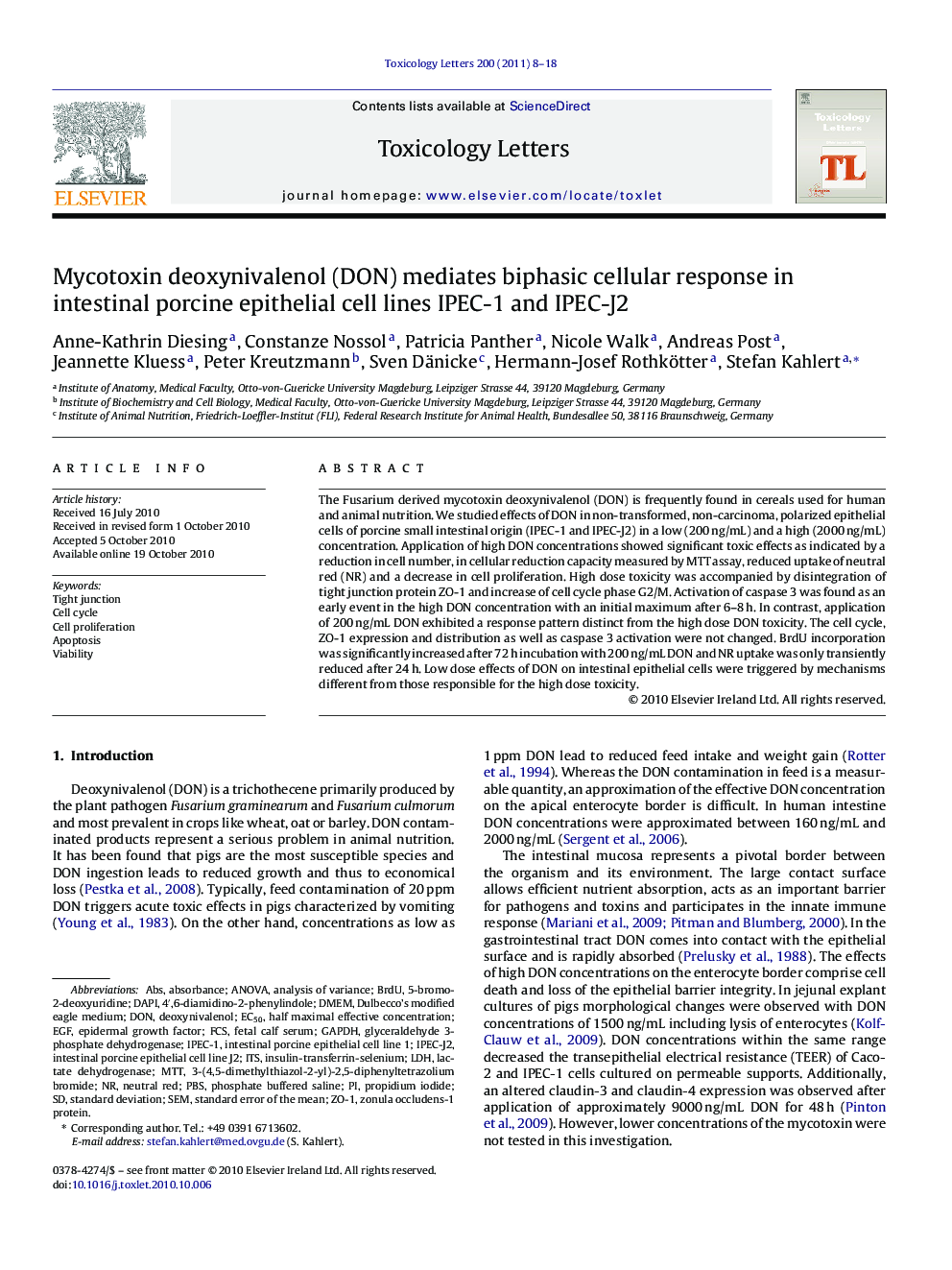| Article ID | Journal | Published Year | Pages | File Type |
|---|---|---|---|---|
| 2600008 | Toxicology Letters | 2011 | 11 Pages |
The Fusarium derived mycotoxin deoxynivalenol (DON) is frequently found in cereals used for human and animal nutrition. We studied effects of DON in non-transformed, non-carcinoma, polarized epithelial cells of porcine small intestinal origin (IPEC-1 and IPEC-J2) in a low (200 ng/mL) and a high (2000 ng/mL) concentration. Application of high DON concentrations showed significant toxic effects as indicated by a reduction in cell number, in cellular reduction capacity measured by MTT assay, reduced uptake of neutral red (NR) and a decrease in cell proliferation. High dose toxicity was accompanied by disintegration of tight junction protein ZO-1 and increase of cell cycle phase G2/M. Activation of caspase 3 was found as an early event in the high DON concentration with an initial maximum after 6–8 h. In contrast, application of 200 ng/mL DON exhibited a response pattern distinct from the high dose DON toxicity. The cell cycle, ZO-1 expression and distribution as well as caspase 3 activation were not changed. BrdU incorporation was significantly increased after 72 h incubation with 200 ng/mL DON and NR uptake was only transiently reduced after 24 h. Low dose effects of DON on intestinal epithelial cells were triggered by mechanisms different from those responsible for the high dose toxicity.
